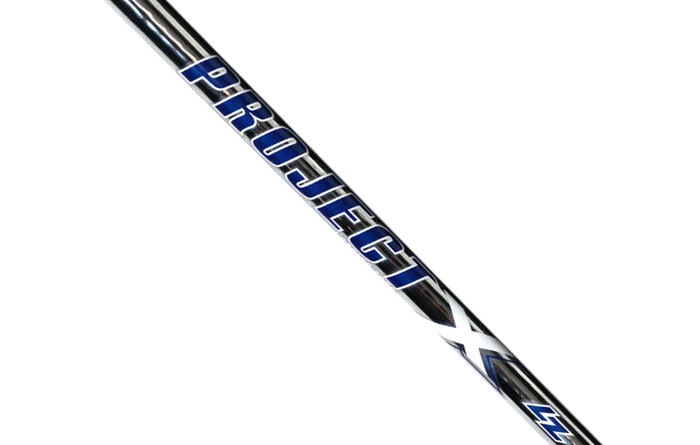Project X LZ Shaft: A Smooth and Stable Iron Shaft for Golfers
If you’re in search of a cutting-edge iron shaft to elevate your performance and deliver a seamless feel, the Project X LZ shaft warrants your attention. Meticulously crafted to optimize shaft load during the downswing, it excels in transferring energy for enhanced distance. Notably, its midsection exhibits reduced stiffness, ensuring a distinctive and velvety-smooth feel throughout your swing. This article delves into a comprehensive review of the Project X LZ shaft, exploring its features, advantages, and potential drawbacks. Additionally, we’ll conduct a comparative analysis with other renowned shafts, providing valuable insights to assist you in selecting the ideal shaft for your game.
What are the specifications of Project X LZ shaft?
The Project X LZ shaft, available in both steel and graphite options, is meticulously engineered to optimize performance by maximizing shaft load during the downswing, thereby ensuring superior energy transfer and increased distance. Notably, its midsection features reduced stiffness, delivering a distinctively smooth feel throughout the swing. Tailored to various weight and flex preferences, the Project X LZ shaft offers a range of specifications for each option:
Steel Shafts:
- 5.0 Flex: 110 grams, 0.355″ taper tip, 0.600″ butt diameter, 5.5 torque, low/mid bend point, mid/high launch, mid spin
- 5.5 Flex: 115 grams, 0.355″ taper tip, 0.600″ butt diameter, 5.5 torque, low/mid bend point, mid/high launch, mid spin
- 6.0 Flex: 120 grams, 0.355″ taper tip, 0.600″ butt diameter, 5.0 torque, low/mid bend point, mid/high launch, mid spin
- 6.5 Flex: 125 grams, 0.355″ taper tip, 0.600″ butt diameter, 5.0 torque, low/mid bend point, mid/high launch, mid spin
Graphite Shafts:
- 4.0 Flex: 62 grams, 0.335″ parallel tip, 0.600″ butt diameter, 4.8 torque, low/mid bend point, mid/high launch, mid spin
- 4.5 Flex: 64 grams, 0.335″ parallel tip, 0.600″ butt diameter, 4.8 torque, low/mid bend point, mid/high launch, mid spin
- 5.0 Flex: 66 grams, 0.335″ parallel tip, 0.600″ butt diameter, 4.5 torque, low/mid bend point, mid/high launch, mid spin
- 5.5 Flex: 68 grams, 0.335″ parallel tip, 0.600″ butt diameter, 4.5 torque, low/mid bend point, mid/high launch, mid spin
- 6.0 Flex: 71 grams, 0.335″ parallel tip, 0.600″ butt diameter, 4.0 torque, low/mid bend point, mid/high launch, mid spin
- 6.5 Flex: 74 grams, 0.335″ parallel tip, 0.600″ butt diameter, 4.0 torque, low/mid bend point, mid/high launch, mid spin
What is the difference between Project X and Project X LZ?
Upon scrutinizing the data, it becomes evident that the Project X LZ exhibits a slightly higher stiffness compared to the Project X of equivalent rank. Essentially, this implies that a Project X 6.0 is approximately as rigid as a Project X LZ 5.5 but slightly lighter. Therefore, if your preference leans towards a lighter yet stiffer option, the Project X LZ emerges as a promising contender.
Nevertheless, it’s crucial to note that the disparities are not monumental. In our evaluation, we chose to compare the Project X 6.0 with the Project X LZ 5.5 since these shafts boast nearly identical stiffness.
The findings are summarized as follows:
Concerning launch and spin characteristics, no discernible distinctions were observed in this assessment. While the Project X LZ exhibited slightly more spin, this discrepancy can be primarily attributed to the striking pattern. Categorizing one shaft as having a higher launch or more spin would be nonsensical.
The significant contrast lies in the profile, particularly noticeable during the transition. Our player found a more favorable experience with the Project X, thanks to its relatively aggressive transition from backswing to downswing. This preference is reflected in the results, especially evident in the outliers that were excluded from our analysis.
Our test player quickly recognized that the aggressive transition could lead to complications, as evidenced by the dispersion. A considerable portion of the balls experienced either slight blocks or closures, forming a typical suboptimal striking pattern for adept players approaching the ball from the inside.
The Project X versus Project X LZ comparison serves as an illustration of the inherent individuality of shaft preferences. It’s worth noting that another player might achieve precisely the opposite outcome based on their unique swing dynamics and preferences.
Is Project X LZ 6.0 stiff?
Upon analyzing the data, it swiftly becomes evident that the Project X LZ exhibits a marginally higher level of stiffness compared to its counterpart, the Project X of equivalent rank. In practical terms, this signifies that a Project X 6.0 is roughly equivalent in stiffness to the Project X LZ 5.5, albeit slightly lighter in weight.
What is a Project X flighted shaft?
In addition to embodying the playing characteristics that have solidified the Project X shaft as a favorite among tour players, the Project X Flighted introduces an accentuated variation in kick points across the entire set, optimizing the trajectory of the ball. Specifically, the long irons feature a lower kick point, promoting a higher ball flight, effortless launch, and increased distance. On the other hand, the short irons are designed with a higher kick point to achieve a lower trajectory, enhancing accuracy and control.
The Project X Flighted shafts are available in different weights corresponding to the flex options:
- 115 grams for 5.0 Flex
- 120 grams for 5.5 Flex
- 125 grams for 6.0 Flex
- 130 grams for 6.5 Flex
- 135 grams for 7.0 Flex
Trimming Instructions: These shafts come in pre-cut lengths tailored for fitting with specific club heads. To install, simply match the shaft with the corresponding club head number and then trim or cut the butt of the shaft to achieve your desired playing length before applying the grip.




